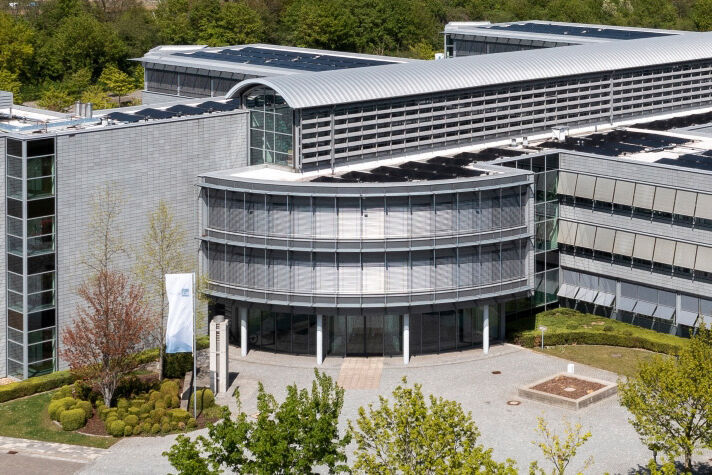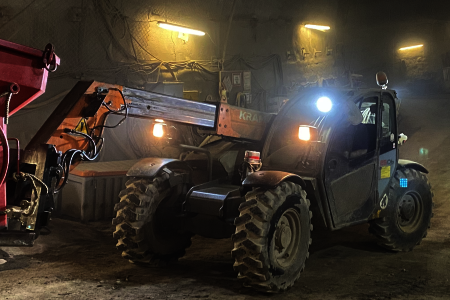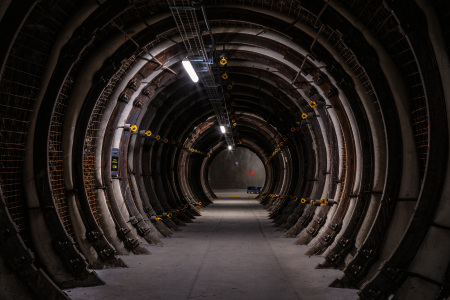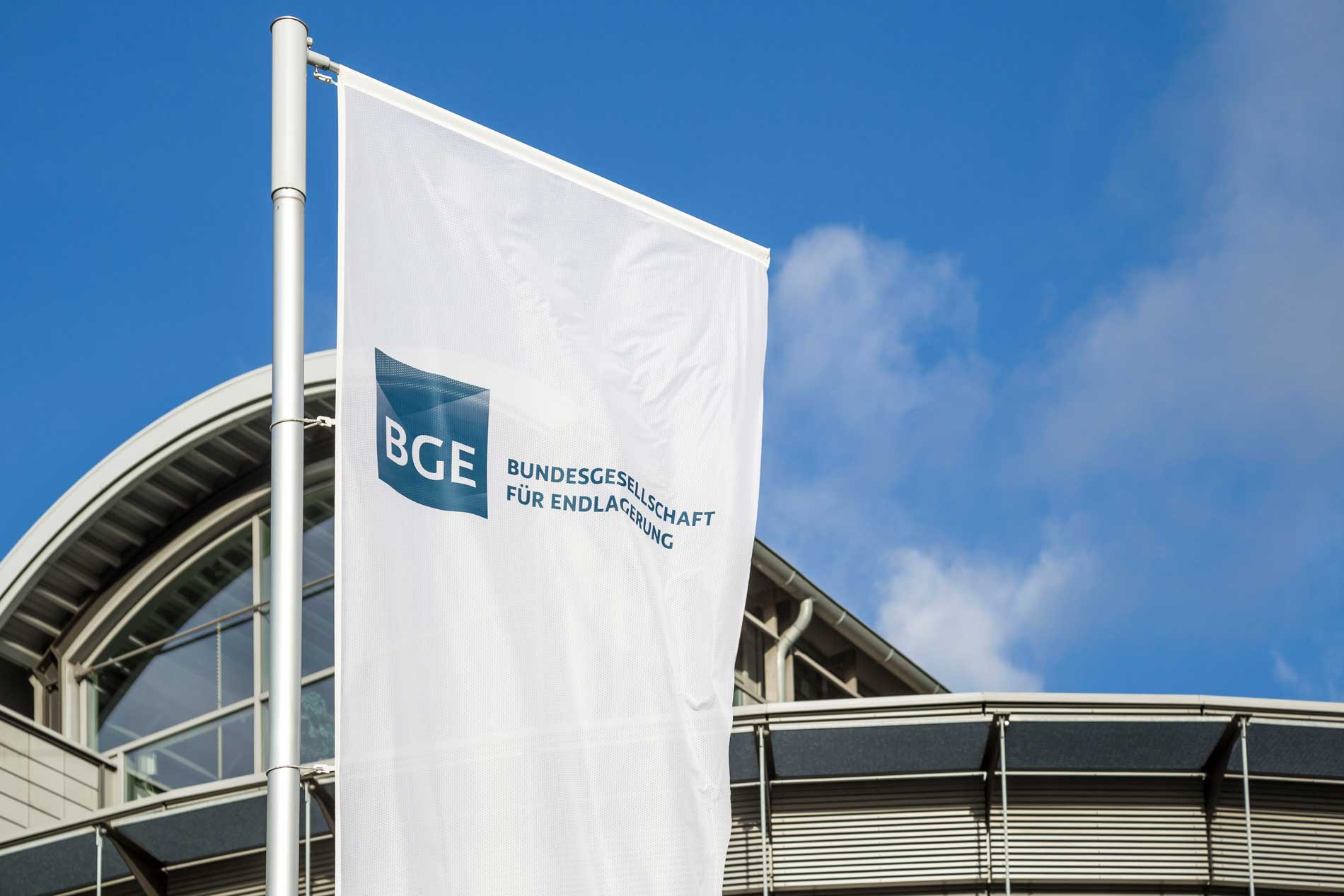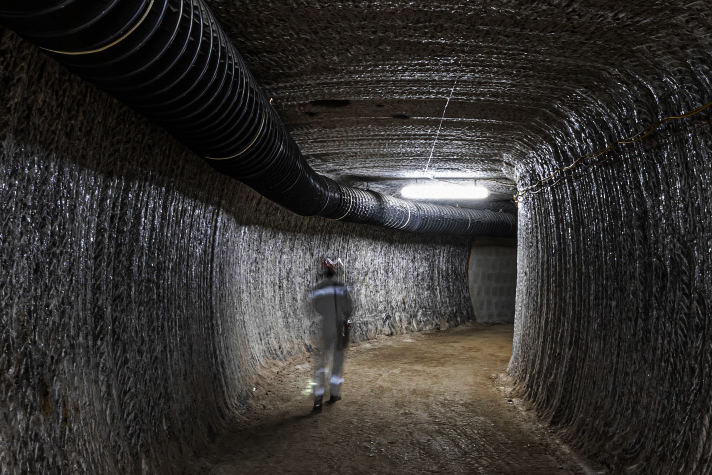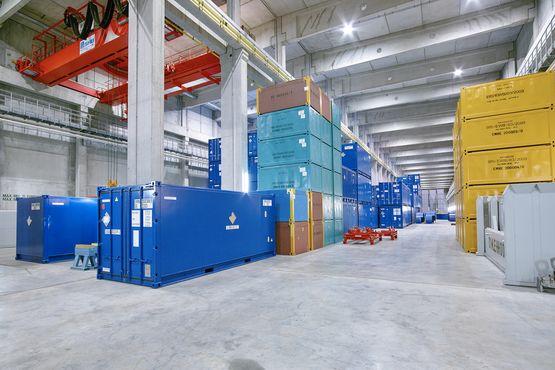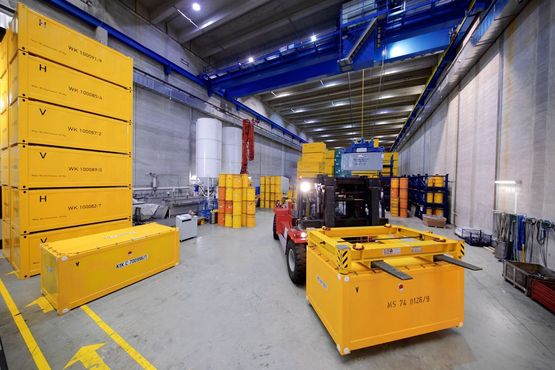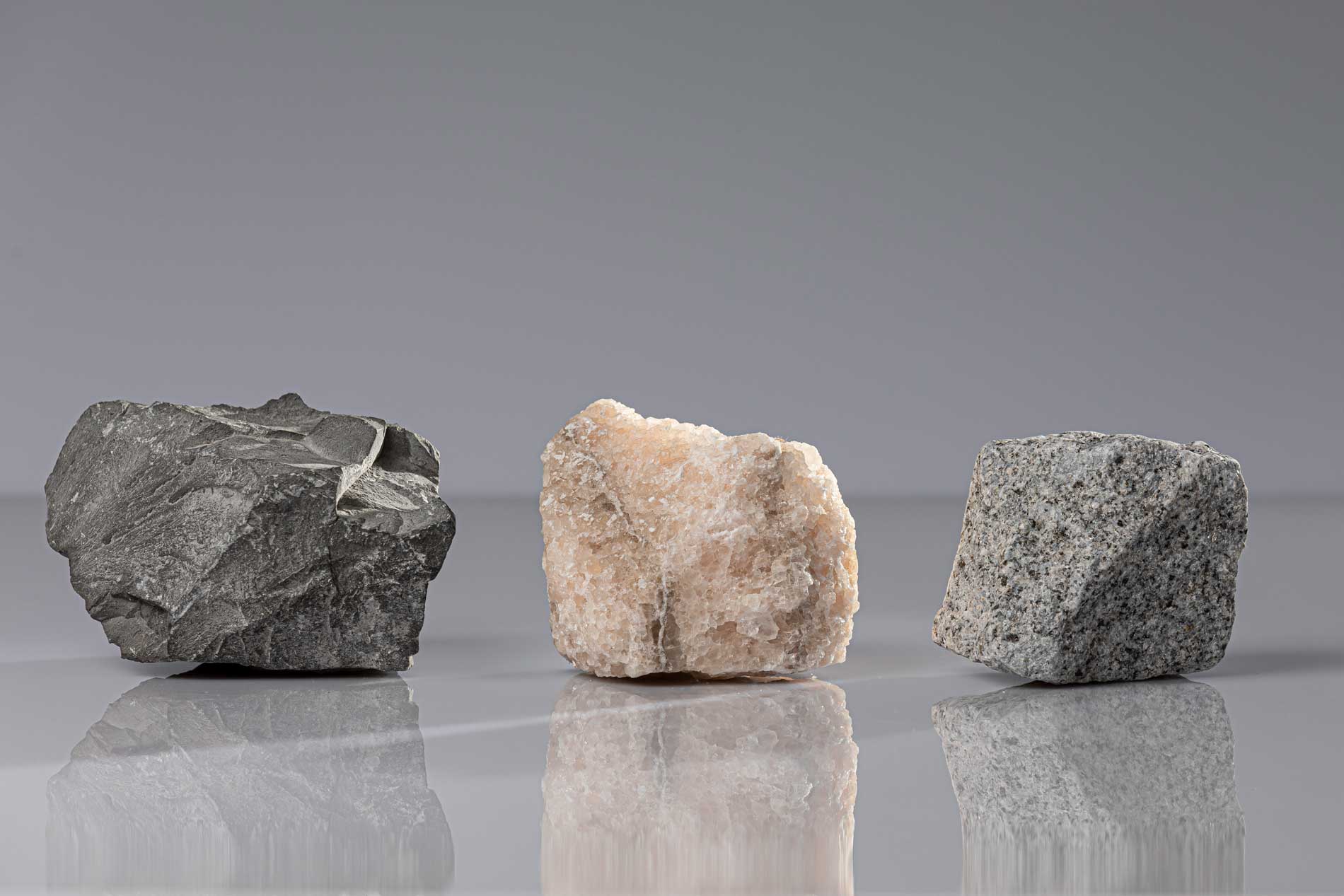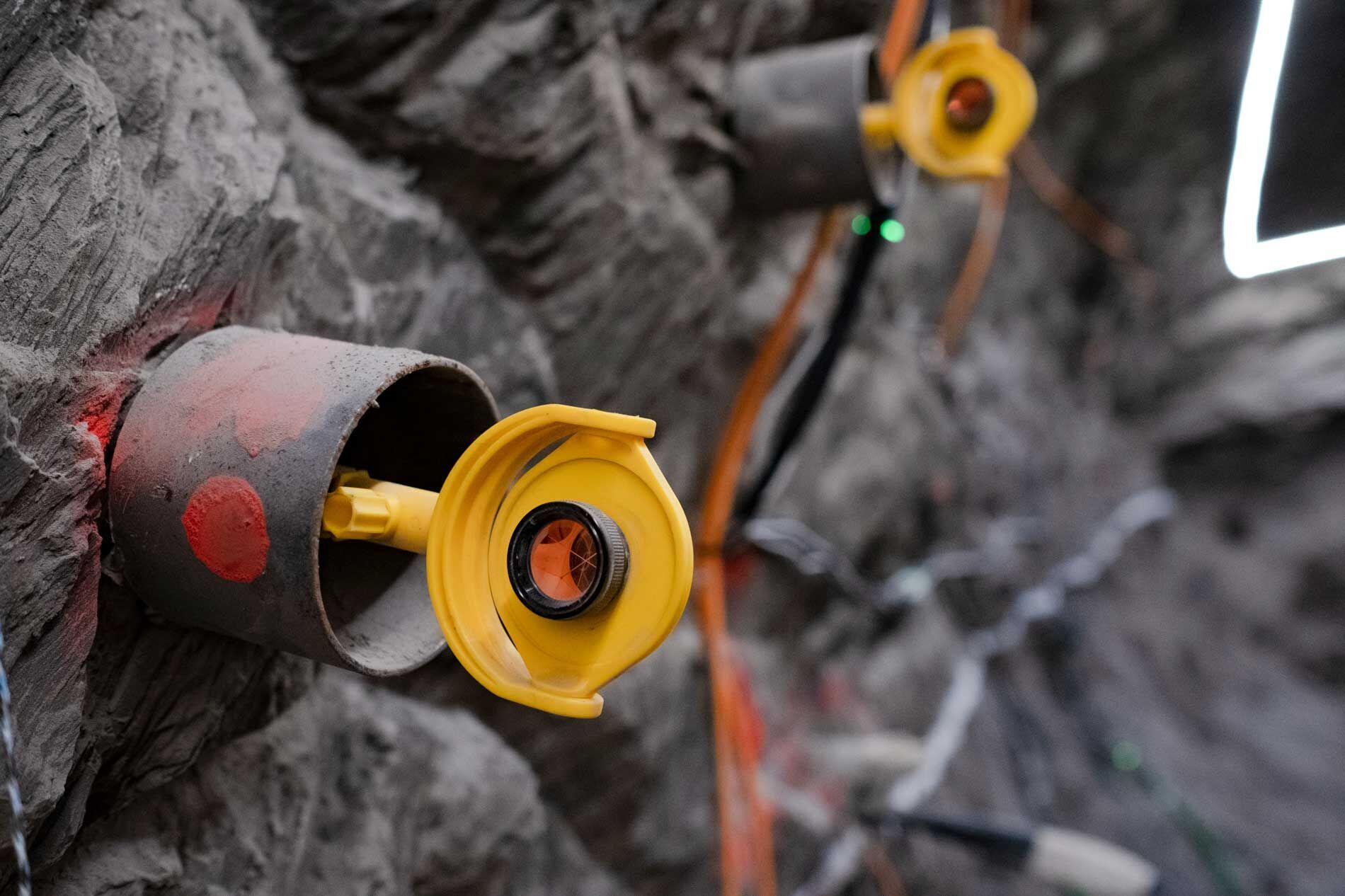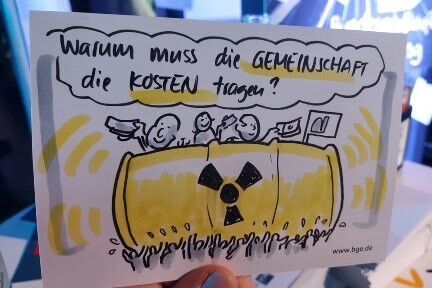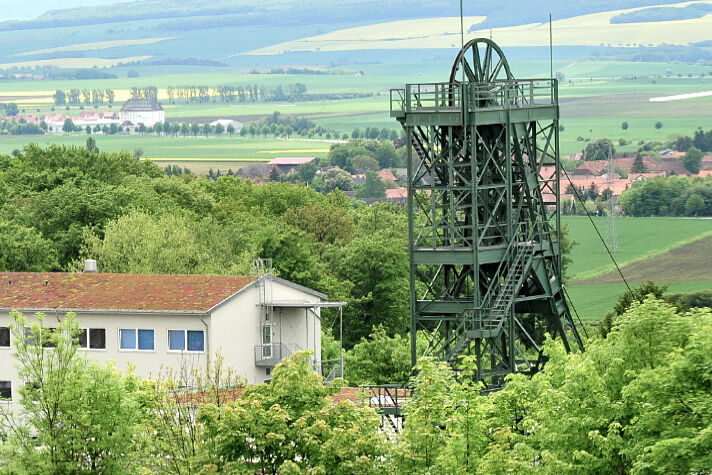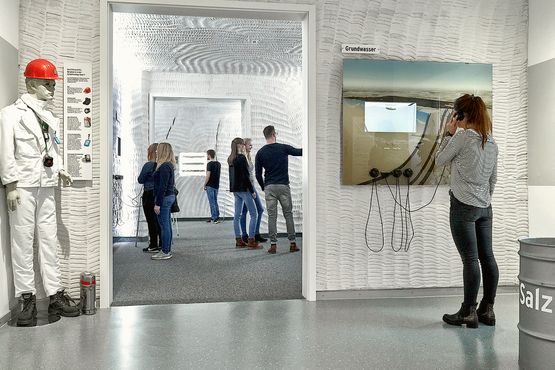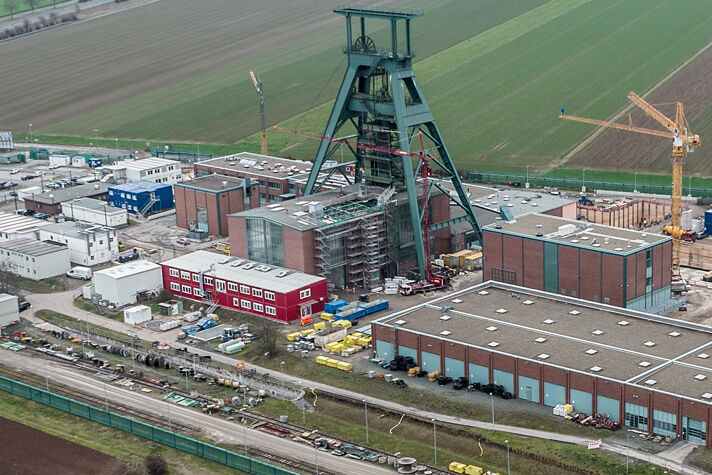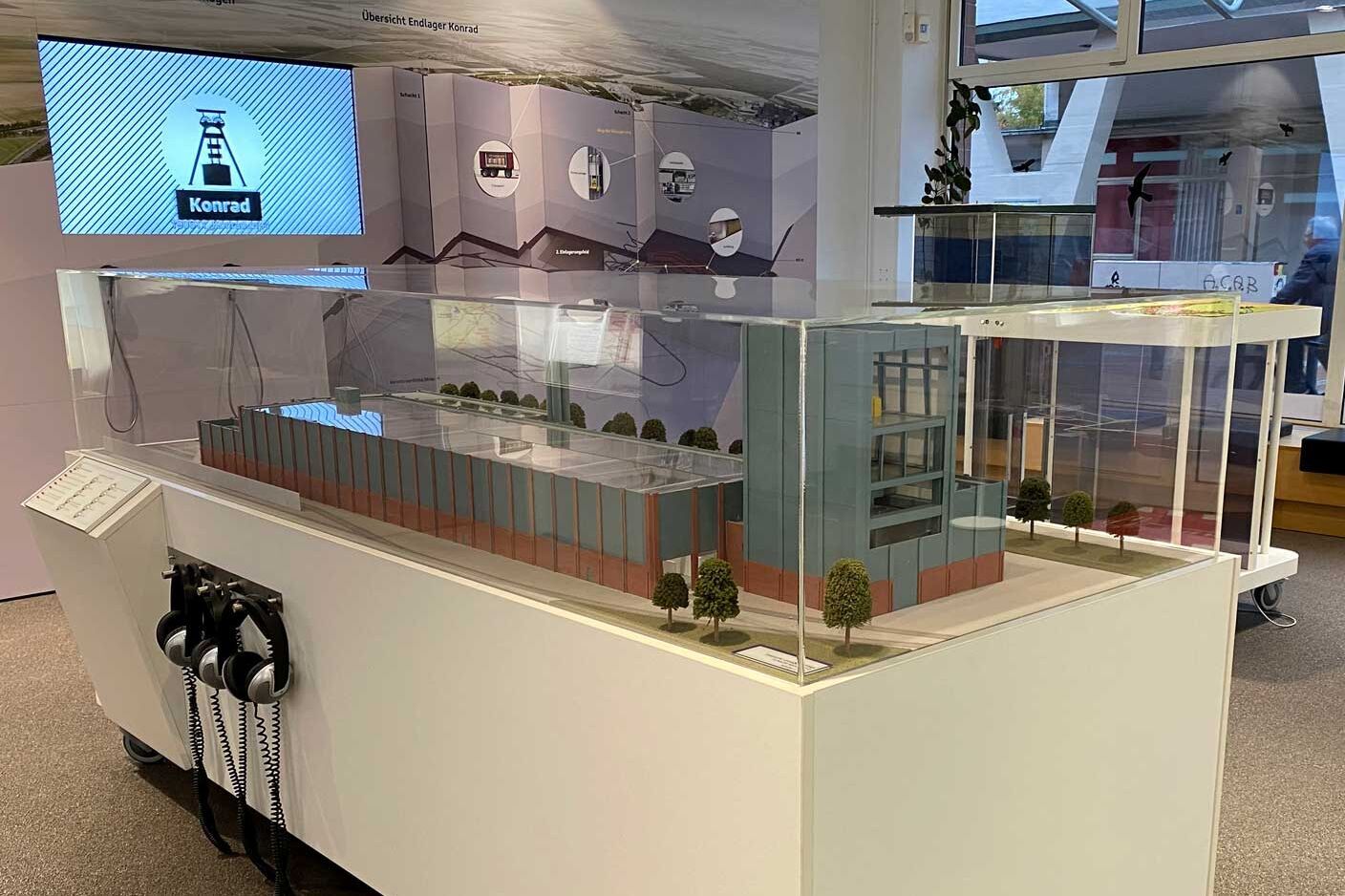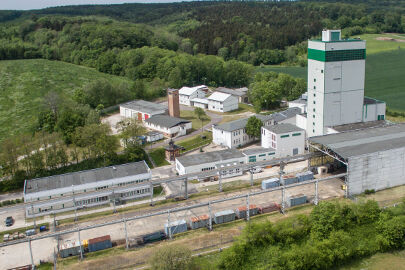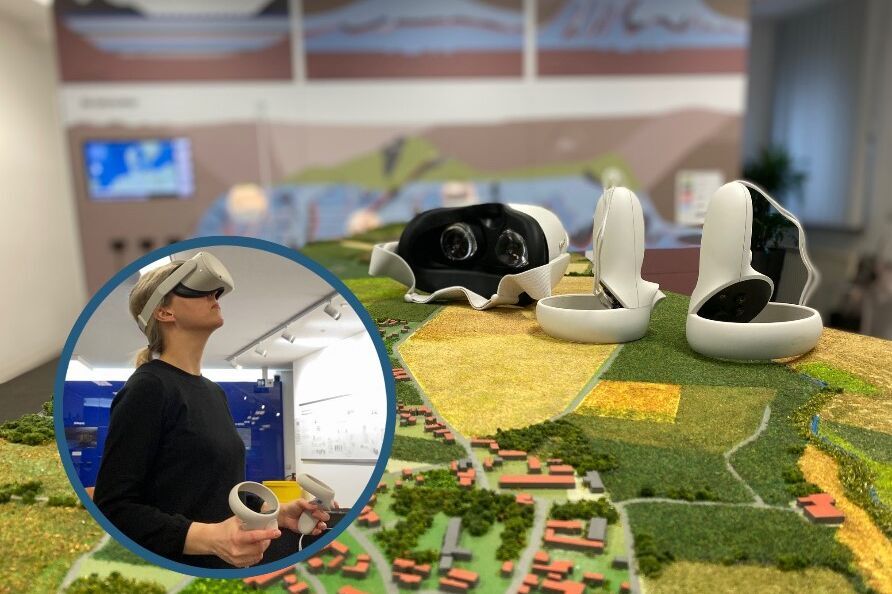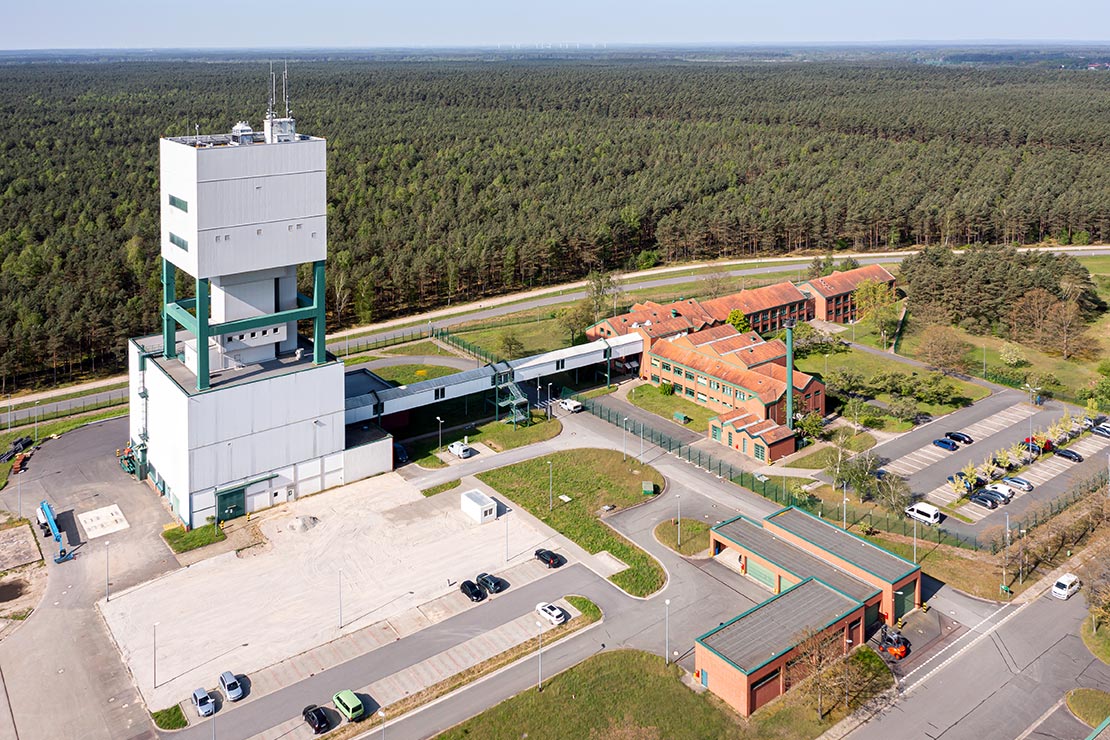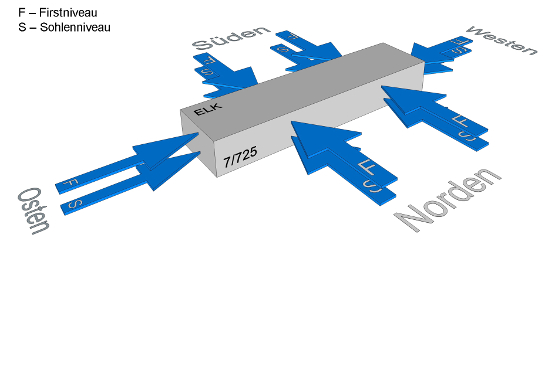19 March 2018
The plans for an early retrieval of radioactive waste from emplacement chamber 7 at the 725-metre level of the Asse II mine have been substantiated. “It is the first time that we can present concrete plans in the direction of retrieval. The early clearance of this chamber would be a good preparation for the retrieval of the waste from the chambers below”, says Ursula Heinen-Esser, Chair of the Management Board of the Bundesgesellschaft für Endlagerung (BGE).
There is already some knowledge about emplacement chamber 7/725. The upper area of the chamber is the only one that is still accessible today. The radioactive waste was dumped into the chamber. After this, the chamber was partially filled with salt. A total of 8,530 waste containers are stored in the chamber. The radioactivity in the chamber is currently still 1.6 × 1014 becquerels, which corresponds to about 7% of the total activity in the Asse.
Early retrieval of waste from Chamber 7/725 means that the waste is retrieved before the chambers at the 750-metre level are cleared. Early retrieval may be necessary because, for example, the new Asse 5 recovery shaft is not yet available. The waste could then be recovered via Shaft 2 if it proves to be suitable. If retrieval via Shaft 2 is not possible, initial waste could be retrieved from the emplacement chamber and repackaged and stored underground until Shaft 5 is completed.
The BGE essentially distinguishes between two procedures for retrieval. Either the waste containers are taken out of the chamber from above. This would involve reaching into the chamber from above. Or the waste is taken out horizontally. For this, the chamber would have to be made accessible in the area of the chamber floor.
The BGE has opted for an early retrieval of the waste from above. This is because retrieval via the chamber floor would create too large a cavity. In the case of retrieval from above, the existing accesses should be used. According to the current state of planning, the transport technology would first be installed on the chamber ceiling. After this, a work area would be created in the eastern area of the chamber. The retrieval would begin from there. The next step would be to uncover the waste containers and remove them. The removal is to take place via the transport technology on the chamber ceiling. This is done from east to west.
“We will now discuss our considerations with the AGO experts and plan further based on their feedback”, says Dr Thomas Lautsch as he describes the next steps.
Once the chamber has been emptied, any remaining contamination is recorded. If work is necessary to reduce the extent of contamination, it will be carried out using retrieval technology. Finally, the retrieval technology is dismantled and the chamber is completely filled with concrete.
The Bundesgesellschaft für Endlagerung (BGE) is seeking a site for a repository for high-level radioactive waste and building the Konrad repository for low- and intermediate-level radioactive waste. The BGE is keeping the Morsleben repository open until decommissioning and is planning the retrieval of the radioactive waste from the Asse II mine. The BGE is a federally owned company within the portfolio of the Federal Environment Ministry. Its managing directors are Ursula Heinen-Esser (Chair), Dr Ewold Seeba (Deputy Chair), Professor Hans-Albert Lennartz (Commercial Manager) and Dr Thomas Lautsch (Technical Manager).

